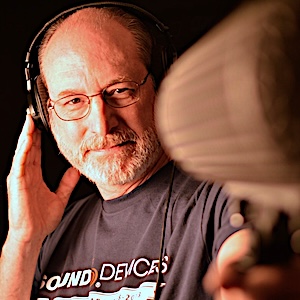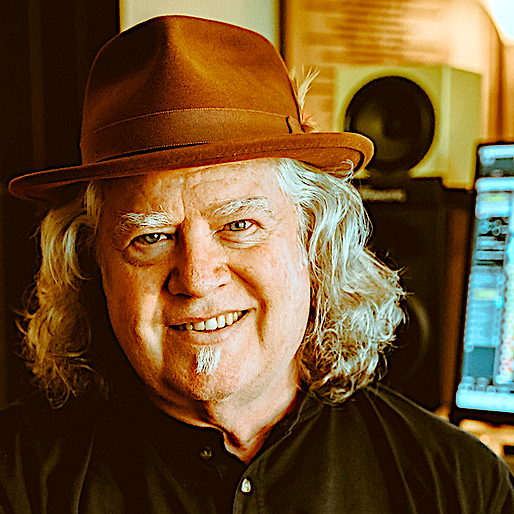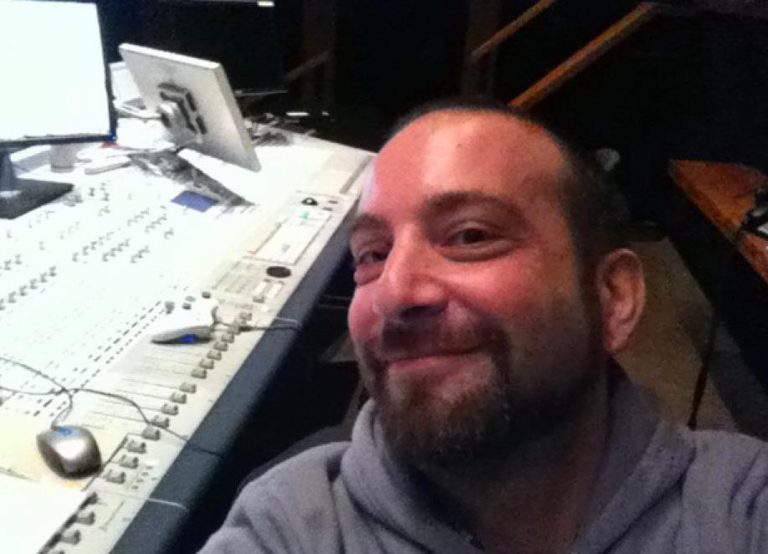Game audio is an intricate blend of creativity and technical proficiency, shaping immersive player experiences. In his lecture, Aaron Marks, a seasoned expert in game audio, shared valuable insights into the evolving landscape of sound design, audio programming, and the industry’s expectations from professionals. His talk covered various aspects of game audio, from creating soundscapes to collaborating with developers, and even the business side of the industry.
Aaron Marks is an accomplished game audio professional with decades of experience in sound design, music composition, and field recording. He is the author of The Complete Guide to Game Audio, a widely respected book used by aspiring and professional game audio designers. Additionally, he has authored Game Audio Development, providing in-depth insights into the technical and creative aspects of interactive sound design. Marks has contributed to numerous games, including NASCAR Heat 4, Ring of Elysium, Ghost in the Shell: First Assault Online, Red Orchestra 2: Heroes of Stalingrad, and Tom Clancy’s EndWar, showcasing his expertise in sound design, field recording, and composition across various genres.
The Role of Audio in Video Games
Aaron Marks emphasised the vital role that audio plays in gaming, from the immersive quality of sound effects to the emotional impact of music. Unlike film, where audio is linear and carefully timed, game audio must be adaptive and dynamic, responding to player actions in real-time.
Marks, who teaches at the Art Institute in San Diego, structures his course to equip students with practical skills in sound editing, implementation, and understanding the development pipeline. He noted that students must leave the course with tangible skills that make them attractive to game developers, including familiarity with middleware like Wwise and FMOD.
The Challenge of Keeping Up with Technology
One of the most common concerns among aspiring game audio professionals is staying up to date with the ever-evolving technology. Marks reassured his audience that instead of trying to master every new tool, they should focus on understanding fundamental audio principles and adapt when needed.
Rather than memorising every function of a software update, he suggested familiarising oneself with tutorials and getting hands-on experience only when required. This approach helps sound designers stay efficient and not be overwhelmed by constant technological changes.
The Growing Demand for Audio Programmers
One key takeaway was the increasing demand for audio programmers. Marks recounted a conversation with an audio director at a leading game developer who was actively seeking an audio programmer even while having numerous sound designers available.
This highlights the importance of programming knowledge in game audio. While not mandatory, having skills in scripting languages such as C# or Python can significantly enhance one’s employability, especially for small development teams where technical implementation is crucial.
Design Examples
For footsteps in different environments, record footsteps on various surfaces such as wood, gravel, concrete, and wet ground using a high-quality field recorder. Enhance realism by layering different recordings, such as separate heel and toe impacts, and adjusting the pitch and volume dynamically to avoid repetition. Use parametric EQ to fine-tune the frequency response and add slight randomisation in playback through Wwise or FMOD to make each step feel unique.
For gunfire effects, combine multiple elements, such as mechanical clicks (captured using metallic objects), muzzle blasts (recorded from actual firearms if possible), and reverb tails (captured from different distances). Use layering techniques to create depth, adjusting low-end frequencies for power and adding a subtle distortion effect to enhance realism. Implement gunfire effects using multiple variations and pitch shifting to prevent repetitive audio patterns.
For ambient soundscapes, capture field recordings in locations that match the intended game environment, such as forests, cities, or caves. Use stereo imaging and reverb to simulate realistic depth and distance, adjusting based on proximity cues in the game engine. Add movement by using modulated panning and volume automation to create a sense of a living, breathing world.
For dynamic music transitions, compose music in layers that can be triggered dynamically in response to in-game events. Use tools like Wwise or FMOD to create seamless crossfades between different musical moods, such as shifting from calm exploration music to an intense combat theme. Implement adaptive musical stingers that introduce new elements based on enemy encounters, player health, or location changes.
For procedural sound effects, instead of using static audio files, generate sounds through synthesis and procedural techniques. For example, generate wind and rain using noise-based synthesis with modulated filters to create natural variation. Use physics-based procedural sound engines to dynamically generate impact sounds based on object weight, speed, and material type.
Final Thoughts
Aaron Marks’ lecture provided a comprehensive look into the world of game audio, covering both technical and business aspects. Whether it’s creating dynamic soundscapes, recording weapons in the field, or optimising casino game audio, the industry offers a wide range of opportunities for those willing to explore. For those looking to break into game audio, the key takeaway is to stay adaptable, build strong relationships, and continuously refine your craft. The world of interactive audio is ever-changing, but with passion and persistence, a rewarding career awaits.




